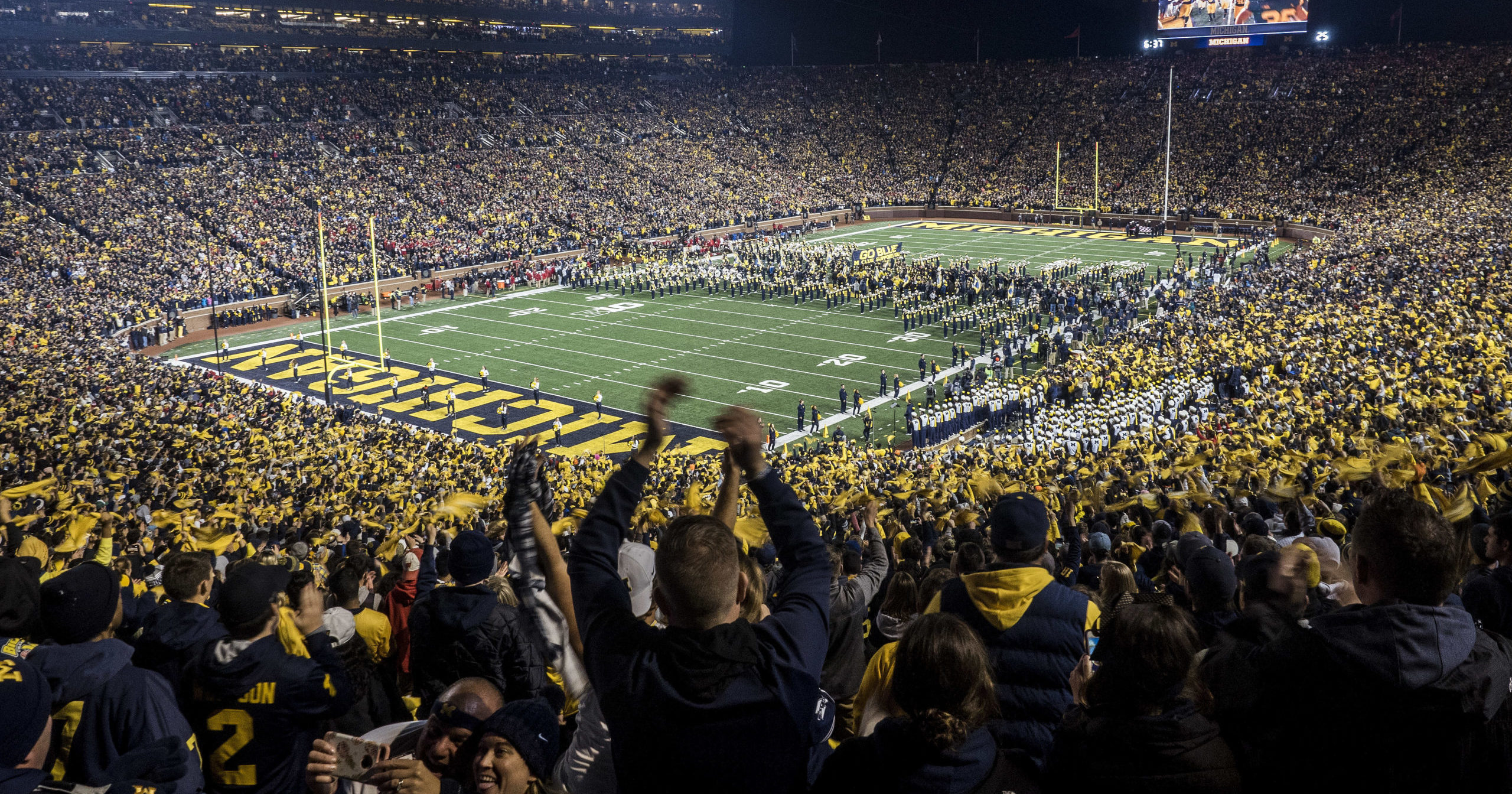
Fall Without Football: Latest Casualty of COVID Fear Hits Hard
Michigan’s Big House will be sitting empty when the leaves start to change this fall.
Southern Cal’s famed white horse, Traveler, won’t be galloping triumphantly after a Trojans touchdown.
No one at Ole Miss knows for sure if fans will be tailgating in The Grove.
From Ann Arbor to Los Angeles to Oxford, that most American of pursuits — college football — has either given up hope of a traditional season or is flinging what amounts to a Hail Mary in a desperate attempt to hang on to a sense of normalcy.
“College football could be the balm for our spirit because it’s such a part of our familiar autumn life,” Charles Reagan Wilson, a professor at Ole Miss, said.
“I think to not have it would up the ante on that sense of abnormality we’re all living through.”
That reality has already arrived for fans in two of the country’s most prominent conferences. On Tuesday, the Big Ten and the Pac-12 both called off their attempts to play this fall.
The remaining Power Five conferences — the Southeastern, Atlantic Coast and Big 12 — are pressing on with their attempts to kick off the season next month.
Ohio State fan Jason Streeter finds it difficult to grasp the concept of a fall without football.
“Devastation,” Streeter said. “It’s just a way of life in Columbus, honestly. It really is. You look forward to those fall Saturdays on the banks of the Olentangy.”
He spoke longingly of traditions that are unique to his school, such as the band’s famed script spelling of “Ohio” during its halftime shows in the center of a nearly 103,000-seat stadium known as “The Horseshoe” — capped off by a lone member high-stepping across the field to “Dot The I.”
“It’s a part of life here, it really is,” Streeter said.
Further down the college football food chain, smaller leagues have pulled the plug on their seasons as well.
“These are places of retreat, places of sanctuary, places of protection,” Earl Hilton, the athletic director at North Carolina A&T, said.
“There’s a feeling that we are in a safe place where we can celebrate and enjoy and appreciate each other in ways that are genuine and authentic.”
Not this year. There’s no football, no homecoming, no chance to watch the school’s famed band perform one of its dazzling halftime shows.
“The leaves change, it gets a little cooler, and it’s just what you do on a Saturday afternoon,” Hilton mused. “I’m at a loss for words to describe what it’s going to be like.”
The loss of college football will also have a crushing impact on bars, restaurants and other businesses that rely on football fans.
That is especially true of college towns like Oxford, Mississippi; Clemson, South Carolina and State College, Pennsylvania.
“I was talking to a restaurant owner here in Oxford who said 50 percent of his yearly profit comes from college football season,” Wilson, the Ole Miss professor, said.
“Even if people are able to come back next year, it won’t be the same. Some of the restaurants they loved won’t be here. Some of the clothing stores, some of the bars, they won’t be here.”
Oxford has a tax base of about 25,000 residents, and the population grows closer to 60,000 when classes are in session.
But on a big football weekend, the town can be swamped by nearly 200,000 people.
“We count on those six to seven weekends a year,” Mayor Robyn Tannehill said. “There are businesses in this town that can weather a slow winter or spring because they know football’s coming.”
The SEC has already cut back its normal 12-game schedule, and the games that are played will surely be in nearly empty stadiums.
“The Grove, the weather, the tailgating, the feel of a big Saturday morning game day,” Tannehill said. “I can’t imagine Oxford without it.”
The Western Journal has reviewed this Associated Press story and may have altered it prior to publication to ensure that it meets our editorial standards.
Truth and Accuracy
We are committed to truth and accuracy in all of our journalism. Read our editorial standards.
Advertise with The Western Journal and reach millions of highly engaged readers, while supporting our work. Advertise Today.












